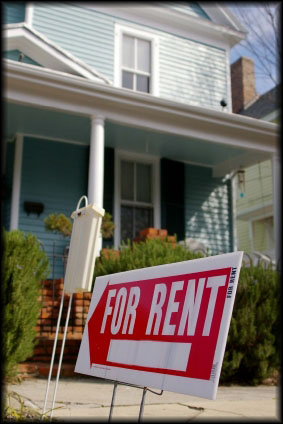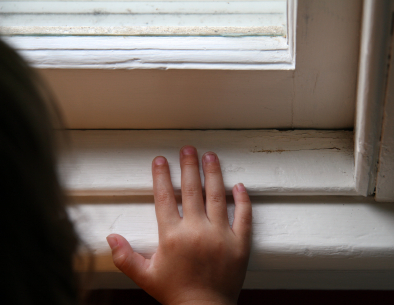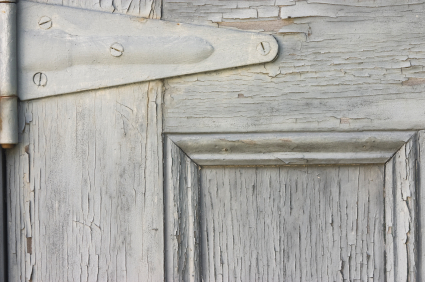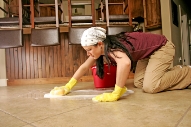DHHS → MeCDC → Environmental and Community Health → EOHP → Childhood Lead Poisoning →Property Owners
Childhood Lead Poisoning

Landlords, Property Managers and Renters
Learn how to renovate, repair and paint safely.
Get information on the
lead-safe renovator course.
Know your rights as a tenant.
- How are Maine children poisoned by lead?
- Is my building at risk for lead?
- What are my responsibilities as a landlord or property manager?
- How do I maintain a lead-safe property?
- What are my rights as a tenant?
- Where can I find more information?
How are Maine children poisoned by lead?
Three in four children poisoned by lead in Maine live in rental housing.
You don’t want this to happen in
your buildings.
Lead dust is the most common way children get lead into their bodies.
- Lead dust collects on surfaces where children
put their hands and play with toys. - Children often put their hands and toys
into their mouths.
Most of the poisonings that occur in rental property are due
to
paint
in poor condition.
If a child is poisoned on your rental property,
you
must pay
for expensive abatement of the property
and the
expense of relocating the family.
Prevent this from happening in your buildings.
Is my building at risk for lead?
If it was built before 1950 it is very likely that it contains lead paint.
Any building built before 1978 may have lead paint.
Lead dust from paint happens in three ways:
1. Lack of maintenance
2. Normal wear and tear
3. Scraping or sanding lead paint
Lead dust is preventable.
Paint in good repair is generally safe. Keeping paint in
good shape (called essential maintenance) is the best
way
to prevent lead poisoning.
Lead paint can also turn into lead dust
from the normal wear such as:
- The friction of a wooden window being
opened and closed. - Weathering, as happens with windows and
exteriors from exposure to cold and wet conditions. - Impacts to the paint, such as closing a door,
walking on a painted floor, hitting trim
with a piece of furniture.
Proper maintenance, cleaning and lead dust testing at unit turnover
can help prevent lead poisoning.
Lead paint can create a lot of lead dust very quickly if it is disturbed by scraping, sanding, or grinding
during renovation or repainting. Following lead safe work practices![]() can prevent contaminating your apartment.
can prevent contaminating your apartment.
How do I maintain my older building to help keep families safe from lead?
Here are a few simple things you can do to maintain your property. Unit turnover is an excellent time to perform these steps because of easy access, no tenants, and less likelihood of poisoning children or adults.
Conduct a visual inspection
- Inspect walls, window sills, stairways and painted
floors for peeling or
chipping paint. Be sure to check both interior and exterior painted surfaces. - Make sure windows and doors move easily.
Window friction can be a major source of fine lead dust. - Check outside for bare soil, particularly close to the building, on
walking paths or places where children play. Lead from exterior paint
and prior use of leaded gasoline can build up in soil. Lead from soil can
be carried into the building on clothes and shoes.
Carefully repair all damaged paint surfaces.
- Cover the work area with durable protective sheeting (plastic or poly)
to prevent the spread of lead and make cleanup easier. - Mist painted surfaces with water before sanding and scraping to avoid
creating dust. - If you use power sanders or grinders, be sure they have an
HEPA-filtered vacuum attachment. - Do not use open flame or high heat to remove paint, as these methods
are not safe for you or your tenants. - Cover painted floors, particularly stair treads, to eliminate friction and
potential dust from lead paint. - Consider replacing windows that are in poor condition.
This can result in both lead safety and energy savings. - Plant grass and small shrubs or use crushed stone or mulch to cover bare soil.
Identify and address any underlying problems.
- Taking the time to fix moisture problems and water damage now
will give the work you are doing the best chance to make the unit lead-safe the for years to come.
See the Lead Paint Safety Guide for Painting, Home Maintenance and Renovation Work.
You can also request a copy from the Environmental Protection Agency (EPA) by calling 1-800-424-LEAD.
Thoroughly clean the unit to remove any lead dust from repairs.
- Pick up large paint chips and visible dust
with a wet paper towel. - Mist protective sheeting with water
before folding it up and putting it into
a trash bag. - Using a HEPA vacuum, slowly vacuum all
floors and windowsills, including corners
and the areas between floorboards. - Scrub window sills and floors with soap and water.
This will do a better job removing lead dust than just wiping these areas.
Be sure to use two buckets, one with clean soapy water, and the other to
wring out your cleaning rag or mop. Once areas are cleaned with soap,
repeat this process with clean water. Be sure to throw out any
rags and sponges used in the clean up. - Flush all cleaning water down the toilet.
Never use sinks, tubs or storm drains. - Put all trash from your work and cleanup into plastic trash bags.
Seal all trash bags with tape before throwing them into a dumpster or disposing of them in the trash.
What are my responsibilities as a landlord or property manager?
Before you rent any property built before 1978, federal law requires you to provide a prospective tenant the booklet "Protect Your Family from Lead in Your Home"![]()
If your building has been tested for lead, you also must tell the prospective tenant the building has been tested and let them see the report. Read more about the disclosure law and get sample disclosure forms ![]() .
.
Anytime you disturb ANY paint in a building built before 1978, state and federal law requires you to:
- Provide your tenants with a minimum of 30 days notice prior to starting any work that disturbs the paint. You must post a sign on the building doors stating what you plan to do AND send a written notice by certified mail
to every unit in the building. - Supply the brochure “Renovate Right”
 to the tenant.
to the tenant.
If you are going to do any renovation, repair, or painting project in your pre-1978 building that will disturb more than 6 square feet of the interior or 20 square feet of the exterior, you must comply with the U.S. Environmental Protection Agency (EPA) Renovation, Repair, and Painting (RRP) Rule. The rule requires that you be trained in lead-safe work practices and have a certificate from the EPA to do the work yourself or hire a certified contractor. Find out more about how EPAs RRP rule applies to property owners and managers ![]() .
.
What are my rights as a tenant?
Before you rent any property built before 1978, federal law requires the landlord must provide you with:
- The booklet "Protect Your Family from Lead in Your Home"

If the building has been tested for lead, they also must tell you. You have the right to see the testing report. Anytime the landlord needs to disturb ANY paint in a building built before 1978, State and Federal law requires the landlord to:
- Provide a minimum of 30 days notice prior to starting any work that disturbs the paint. They must post a sign on the building doors stating what you plan to do AND send a written notice by certified mail to every unit in the building.
- Supply the brochure “Renovate Right”
 to the tenant.
to the tenant.
Finally, you have the right to rent a unit that is reasonably safe and fit to live in.
This is called the "Warrant of Habitability" and can be found the Maine Attorney General's Tenants Rights![]() web page.
Be sure to provide your landlord with written notice by certified mail of any problems with paint in your apartment.
Keep a copy for your records.
web page.
Be sure to provide your landlord with written notice by certified mail of any problems with paint in your apartment.
Keep a copy for your records.
If you rent an apartment in an older building you should:
- Use wet cleaning methods once a week.
- Notify your landlord of any chipping or damaged paint.
- To protect your belongings from lead dust when your landlord needs to make repair:
- Remove kids toys and furniture from the room.
- Move other furniture at least five feet away from the work area.
- Ask your landlord for plastic sheeting to cover furniture and belongings.
Where can I find more information?
| Document/Resource | Source | Size | Type |
|---|---|---|---|
| Get Smart About Lead Paint, Best Practices for Landlords and Property Owners | Maine Childhood Lead Poisoning Prevention Unit, Maine CDC, DHHS | 197k | PDF* |
| Looking for Lead | Maine Childhood Lead Poisoning Prevention Unit, Maine CDC, DHHS | 336k | PDF* |
| Maine Department of Environmental Protection (DEP) Lead Hazard Prevention |
State of Maine | N/A | Web |
| Lead Paint Safety: A Field Guide For Painting, Home Maintenance, & Renovation Work |
U.S. Housing and Urban Development | 1.3 MB | PDF* |
| Protect Your Family From Lead In Your Home |
U.S. Environmental Protection Agency | 2.1 MB | PDF* |
| Maine Attorney Generals Office Of Consumer Protection |
State of Maine | N/A | Web |
| Testing Your Child For Lead | Maine Childhood Lead Poisoning Prevention Unit, Maine CDC, DHHS | 99k | PDF* |
| Don’t Take Lead Home From Your Job! | Maine Childhood Lead Poisoning Prevention Unit, Maine CDC, DHHS | 150k | PDF* |

